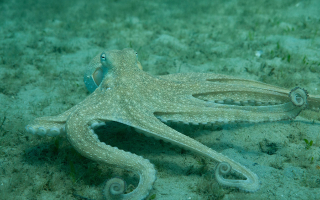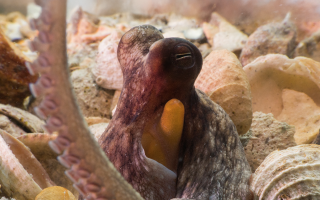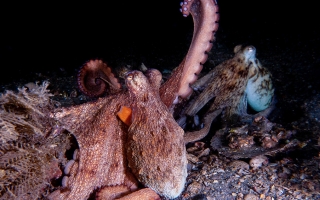Flamboyant Cuttlefish

Flamboyant cuttlefish (Metasepia pfefferi) are brilliantly colorful cephalopods from the Indo-Pacific region and can be found off the northern coast of Australia, Southern New Guinea, and various islands of the Philippines. Flamboyant cuttlefish can capture prey two-to-three body lengths away using two long, elastic feeding tentacles. The tentacles are transparent, so unsuspecting prey cannot see what is coming.
Females, which are about twice the size of the fully-grown males, lay transparent eggs hidden under large shells and full embryonic development can be observed with the naked eye. When fully developed, a hatchling will emerge as a tiny version of its parents.
Type: Cephalopod
Habitat: Open sand and mud bottoms in shallow depths around coral reefs
Range: Indo-Pacific region
Life Span in the Wild: 18 – 24 months
Size: 2.4 inches (6 cm) to 3.1 inches (8 cm)
Diet: Small crustaceans and fish
Status: Vulnerable
The flamboyant cuttlefish has some of the best camouflage in the animal kingdom. Recent research from the MBL’s Hanlon Lab found that camouflage is its primary mode of defense and it’s what the cuttlefish looks like most of the time. But when a predator or threatening object (such as a SCUBA diver) comes too close, the cuttlefish will flash its famous flamboyant display—switching from camouflage to flamboyant in as quickly as 700 milliseconds. The vibrant colors (white, yellow, red, and brown) of the flamboyant display are combined with apparent “waves” of dark brown color that produce a dazzling and dizzying kaleidoscope of motion, color, and patterning. Small males also show flamboyant display to large females as part of an elaborate courtship ritual.
Fast neural control of many thousands of chromatophore organs in the skin enable this unique signaling capability – all turned on or off in less than a second and changed depending on the behavioral context of the courtship, or in the case of defense, the fish predators that discover them.



